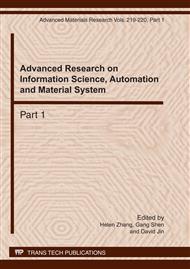p.1224
p.1228
p.1233
p.1237
p.1243
p.1249
p.1253
p.1258
p.1263
Developing the Balanced Scorecard Strategies for Vocational College Library
Abstract:
This study attempts to comprehend the influence on vocational college library in Taiwan through the four structural dimensions of the balanced scorecard on financial perspective, customer perspective, internal process perspective, and learning and growth perspective, and investigate them further and thoroughly. Based on the author’s fifteen-years working experience on vocational college library, this paper provides management strategies to assist vocational college library in enhancing performance of library service, and expect to create a new vision for future development of vocational college library in Taiwan.
Info:
Periodical:
Pages:
1243-1248
Citation:
Online since:
March 2011
Authors:
Price:
Сopyright:
© 2011 Trans Tech Publications Ltd. All Rights Reserved
Share:
Citation:


